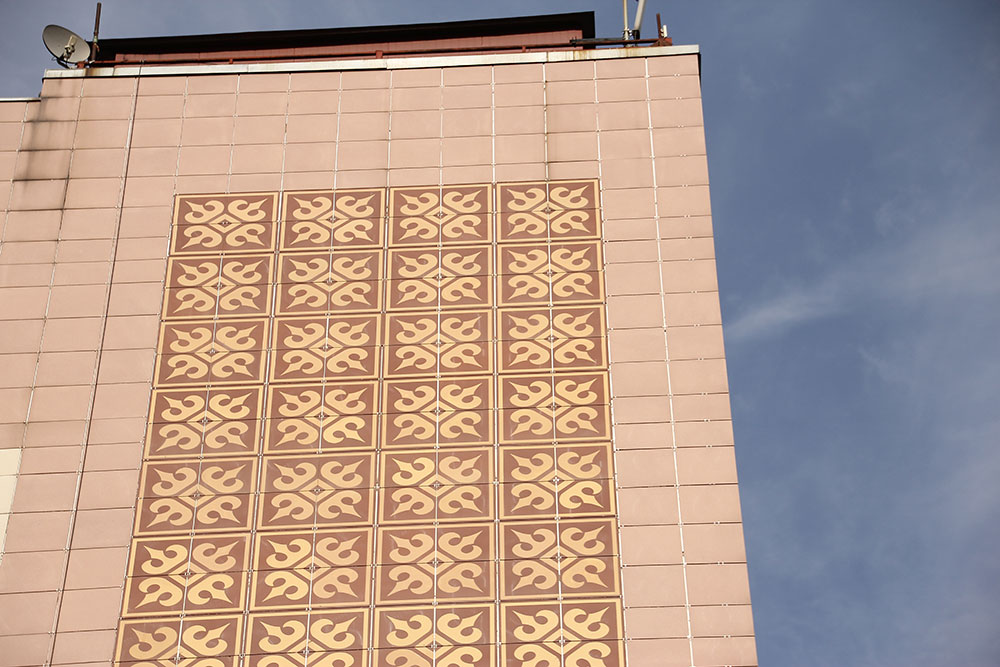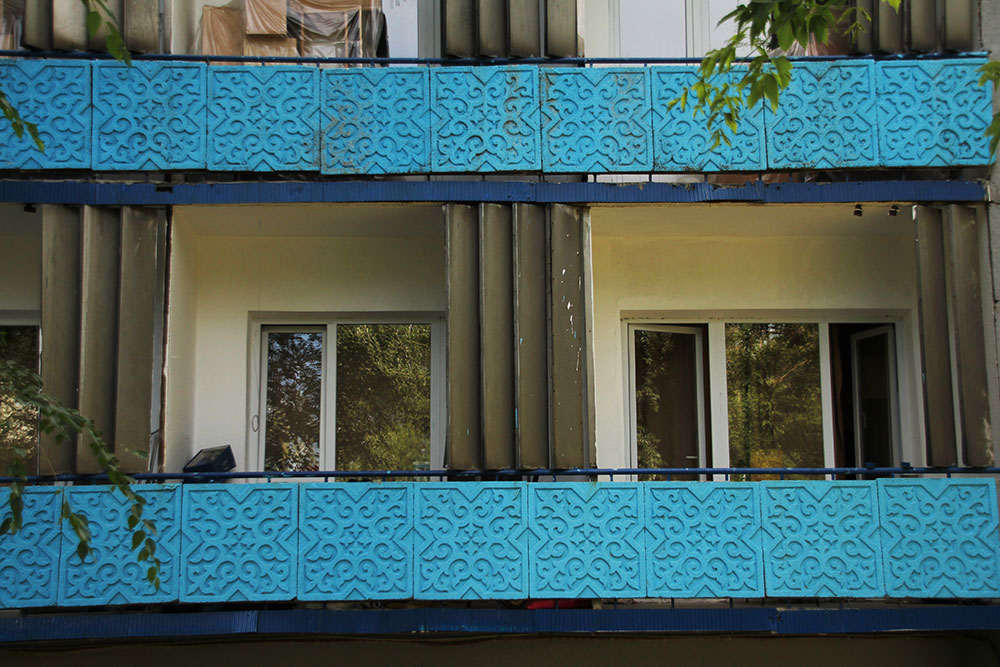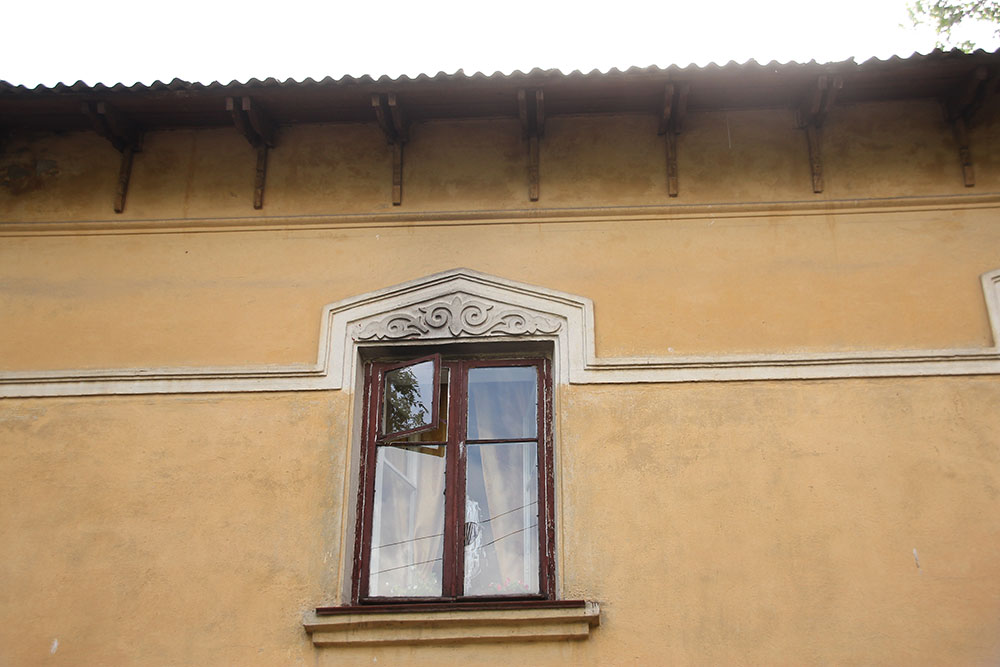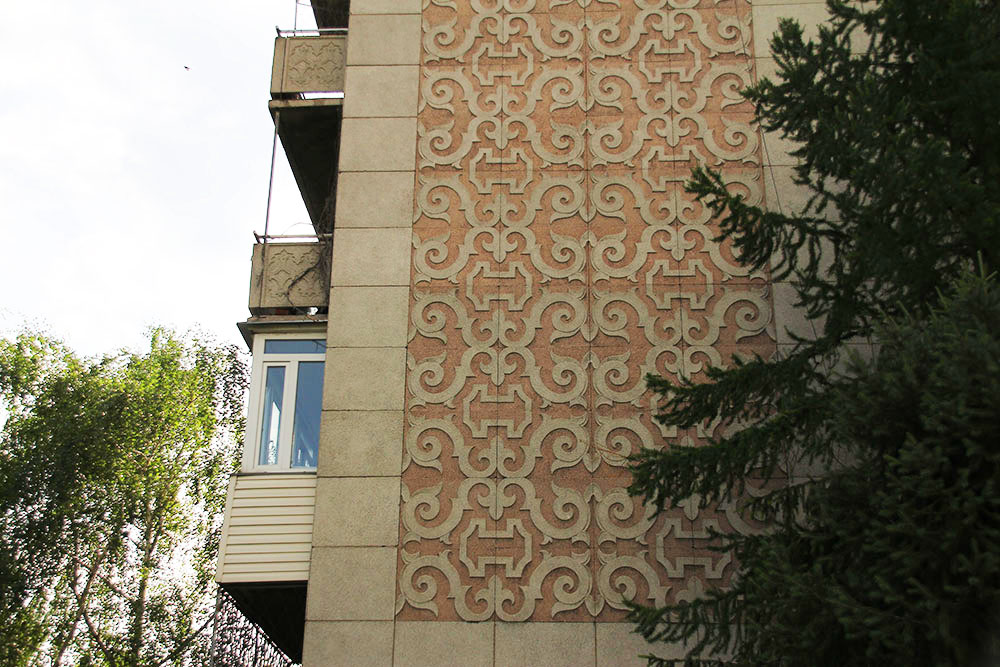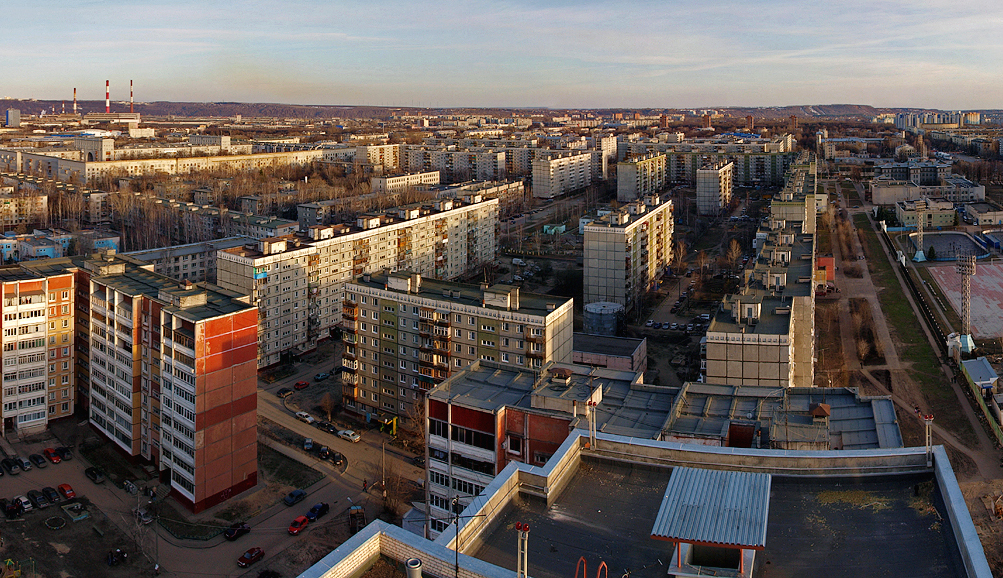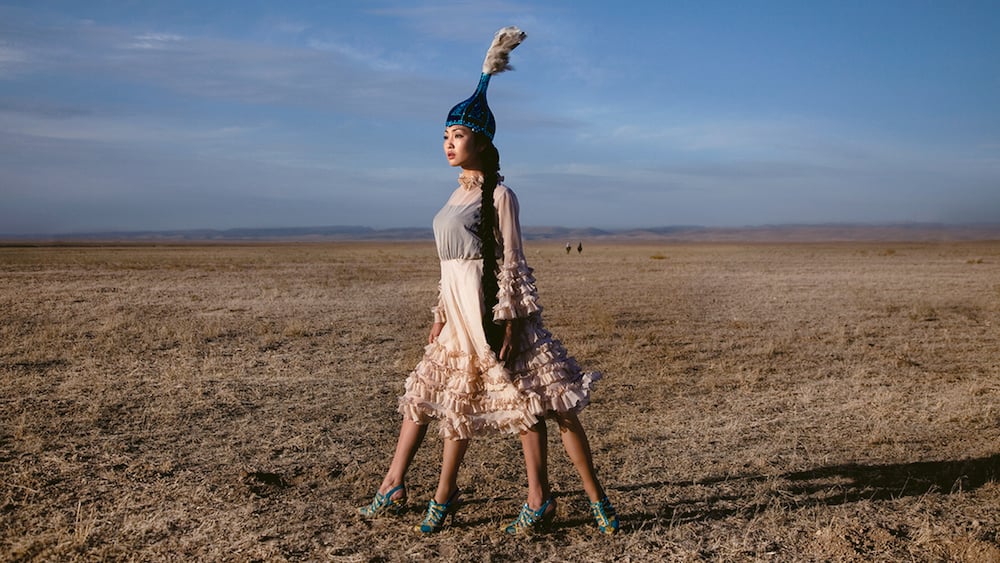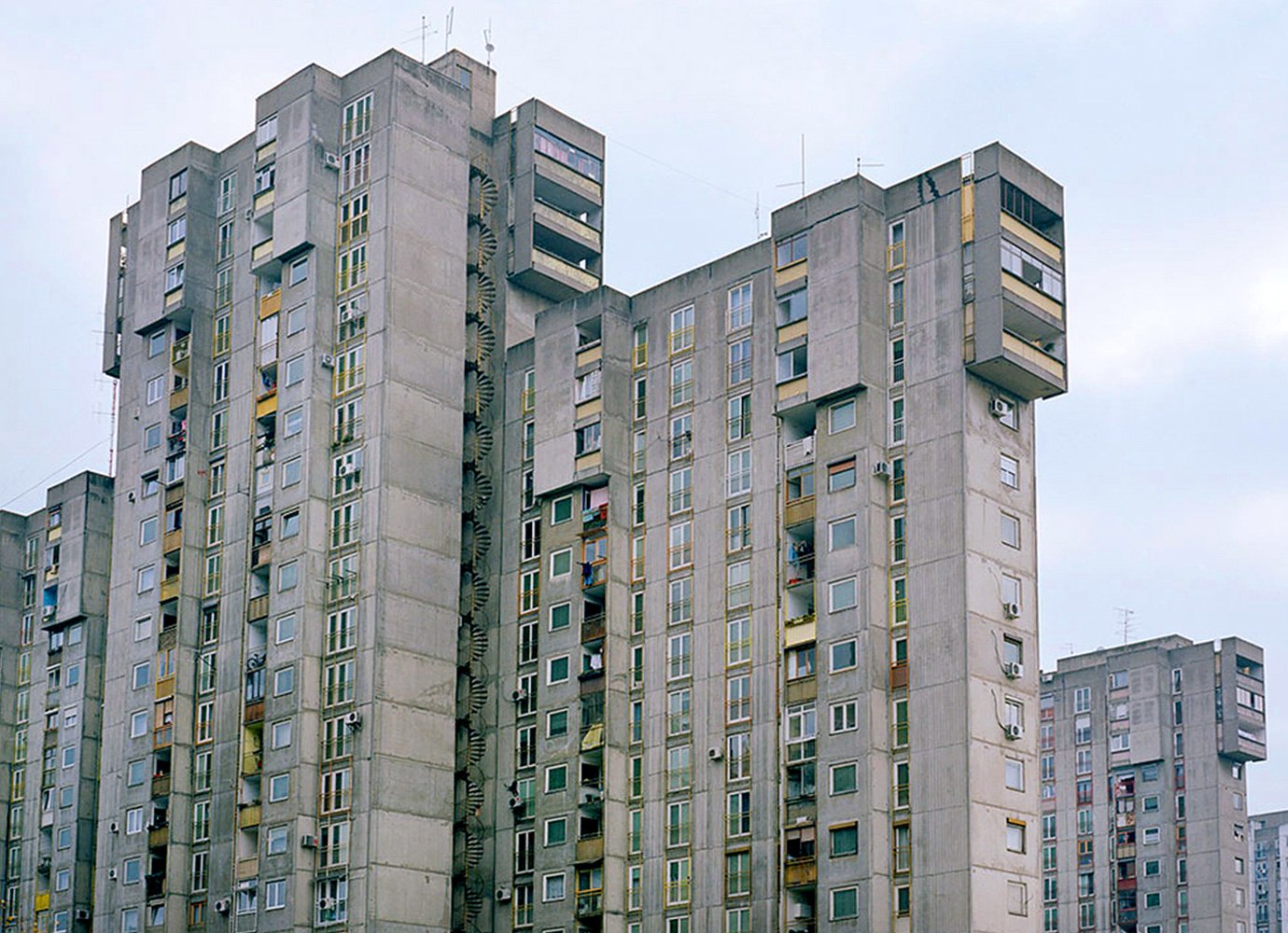Concrete tapestries: how the traditional yurt lives on in Kazakhstan’s tower blocks
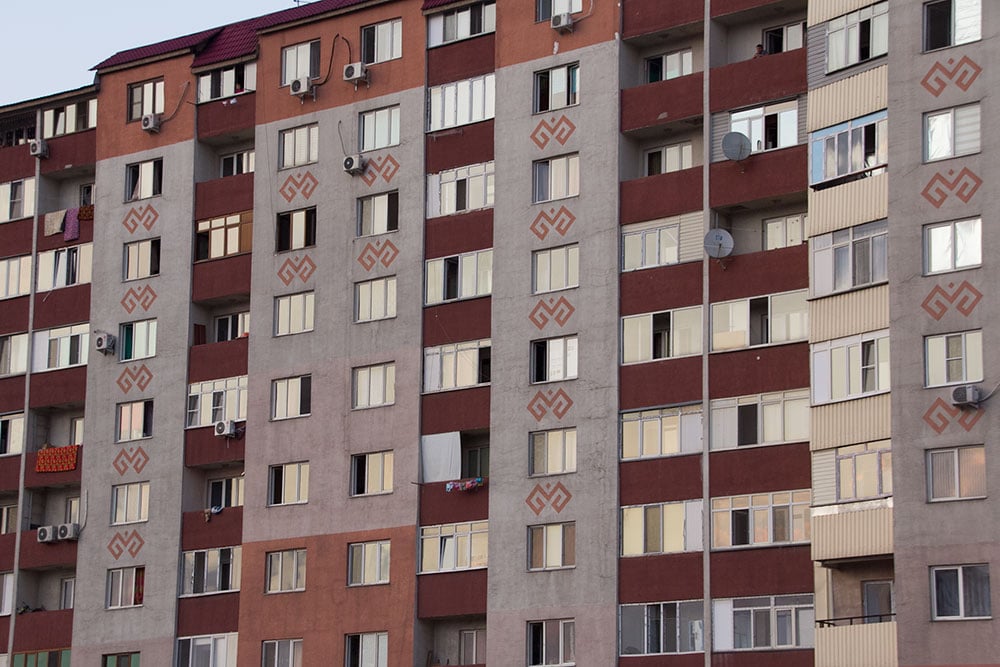
Soviet architecture in Almaty, Kazakhstan’s former capital, is distinguished by its bright, elaborate motifs. Dennis Keen traces these ornaments back to the nomadic, fabric yurt
The humble yurt of the Central Asian nomads, for all its ingenious simplicity, has always presented a challenge to modern architects: it does not scale. The structure certainly has its killer features. Its walls consist of collapsible wooden lattices, saving space for long journeys like a vacuum pack. An opening in the roof lets out smoke or lets in starlight, and the whole thing is swaddled in a warm, waterproof felt. The most unusual thing about it, structurally speaking, is its lack of right angles. Kazakhs have always known that this round footprint makes it sturdy during snowstorms, but when Soviet architects went looking for the next stage in the development of “national Kazakh architecture”, the circular shape left them at a dead end. How do you blow up a squat tent into a building to house the masses? The answer is, you don’t.
So Kazakh builders abandoned the form that had sheltered them for centuries and barrelled into the two- and three-storey future. Almaty, the capital of Soviet Kazakhstan for 64 years, took on the look of a Russian town, with a grid of streets, a central square, and apartment buildings huddled around courtyards. Visitors to this green city in the foothills of the Alatau mountains often remark now that it feels “European”, which is to say that the forms are all familiar to the Western eye. Indeed, you can go to another city full of ex-nomads, Ulaan Baatar in Mongolia, and find yurts sprawling for miles, but in Almaty the iconic Kazakh home is nowhere to be seen. Yet if you look closely, if you get close to the facades and study the plaster, you’ll see that the spirit of the yurt has survived. The yurt has just been turned inside out.
It was always the yurt’s interior where the Kazakhs concentrated their ornamental energies. The outside was an early ode to minimalism, pure white and nothing else. The inside, on the other hand, verges on horror vacui-levels of decorative obsession. Felt rugs covered the floors, reed screens covered the walls, wall hangings covered the reed screens, and bands of fabric hung from the poles in the rooftop. Everything, everywhere, was covered in the same geometrical allusions, abstracted rams’ horns and swans and flowers. This visual world, woven by Kazakhs for centuries and hidden in their homes, is what has survived from the yurt in modern Almaty. Only now, it has migrated to another medium. Plush textiles have been translated into concrete moulds.
Get up close to the architectural relics of Soviet Alma-Ata and you’ll start to see that the panels on pre-fab balconies feature spinwheels made of rams’ horns. Doorways are framed by the same iterating ornament, and on the pediments of institutional buildings, where you might otherwise find a hammer and sickle, you’ll find the embroidery of a carpet. This is all there because of the same imperative from Moscow that may have once inspired that yurt-shaped apartment block: design should be “national in form, socialist in content”. That meant that housing projects built to house the proletariat, or the palaces built for party congresses, or the academies built for socialist sciences all had a communist purpose, but they also needed local flavour. Kazakh ornament, pulled straight from a reed screen, is what made a wedding palace in Almaty different than one in Kiev or Tbilisi or Ashgabat.
This decorative policy first showed up in the dvukhetazhniki, or two-storey buildings, built in Almaty from the 30s onward. This was way before Krushchev, of course, way before the pre-fabricated concrete apartment blocks that became synonymous with Soviet architecture. Building technology in the Stalinist period was at a totally different stage. “Brick and Bracket”, we can call these early Almaty buildings, because they’re built up from clay bricks painted over with plaster, and the eaves hanging over the second storey are held up by carved wooden brackets. The third defining feature, though, is the ornament. Below those brackets you might see a 3D frieze running around the building, and if you showed that pattern to a time-traveling nomad, he’d open his eyes wide in recognition, because he’d see the very same shapes found in the fringe of his carpet.
There’s a point in the Soviet architectural timeline where these Kazakh friezes and pediments and pilasters became faux pas, and it’s no gradual fade but a screeching halt. It was Stalin whose favoured style was often compared to wedding cakes because of all the caulked-on filigree, and any Almaty building with elaborate plaster can be dated to his reign. After his death, a sea change: Krushchev set a drastic new course for the USSR’s construction industry, and minimalist efficiency was the name of the game. High-rise buildings would be assembled from concrete slabs, and the end result was architectural forms so repetitive that a Soviet comedy film, The Irony of Fate, has a plot premised on the fact that a man could enter a building in St Peterburg and find the very same apartment as the place he kept in Moscow.
The fate of Kazakh ornament, in turns out, is itself ironic because amid all this minimalism and conformity in late Soviet architecture, national patterns found a way to thrive anew. The designers at the Almaty Homebuilding Factory realised that all that hand-carved plaster presented a problem: like the humble yurt, plaster couldn’t scale. If you wanted to put up thousands of buildings to house a booming urban population, you couldn’t decorate each one individually. Building projects had to be copy-and-pastable, but that just meant that the ornament itself became more memetic. You needed only to design one mould for a panel made of concrete and rebar, and that same panel could grace balconies in every corner of the city. Sneak some sacred rams’ horns on that panel and soon Kazakh patterns were just as ubiquitous as ever.
What’s curious is that when Kazakh architectural ornament entered its third phase in the independence era, after the years of brick and bracket and concrete and rebar, it still managed to survive. In the absence of communism, architects in Kazakhstan no longer had an ideological dictum to compel them to Kazakhify their projects. Ornament could very well have fallen by the wayside. Yet nationalism grew stronger and Kazakh symbols gained a new importance: they stood for a brand new state. The blue and yellow flag, designed in 1992, featured a strip of swan’s necks, or qaz moyin, and these heart-like patterns can now be seen dripping down granite and glass office towers throughout Almaty.
Now a century removed from the “Age of the Yurt”, we’ve arrived at an unusual situation. The tent tradition itself is nearly dead. The textile tradition is on life support. One of the only places that traditional Kazakh culture lives on is, amazingly, in these superficial patterns. What started as an homage to nomadic wallpaper has replicated itself so aggressively that the reference has been divorced from the source. If local Almatians notice the ornament at all, they might remark that it reminds them of the strip on their national flag. The yurt and its carpets seem too distant to offer explanation. The struggle to define a national architecture seems quaint. The yurt was turned inside out, but its inner splendours have somehow faded into obscurity, left on forgotten facades.


